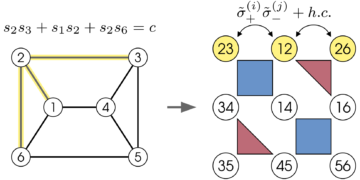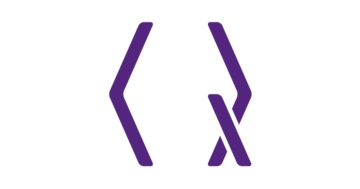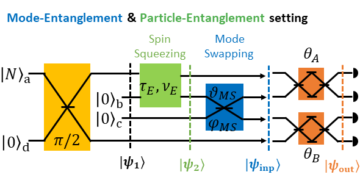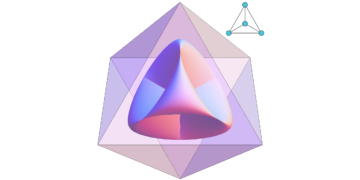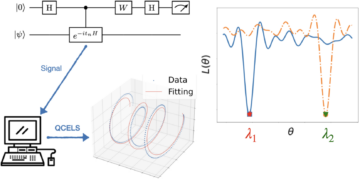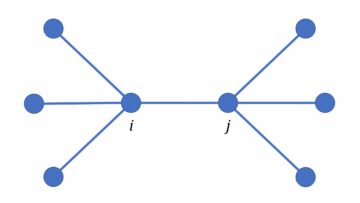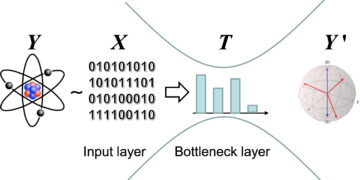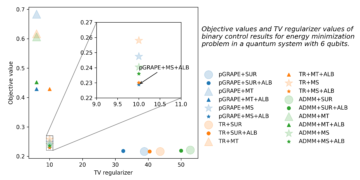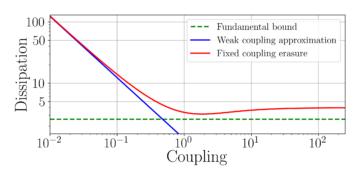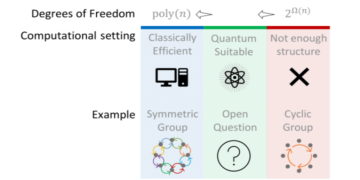1Institute for Quantum Computing, Baidu Research, Beijing 100193, China
2QICI Quantum Information and Computation Initiative, Department of Computer Science, The University of Hong Kong, Pokfulam Road, Hong Kong, China
Find this paper interesting or want to discuss? Scite or leave a comment on SciRate.
Abstract
Extracting classical information from quantum systems is an essential step of many quantum algorithms. However, this information could be corrupted as the systems are prone to quantum noises, and its distortion under quantum dynamics has not been adequately investigated. In this work, we introduce a systematic framework to study how well we can retrieve information from noisy quantum states. Given a noisy quantum channel, we fully characterize the range of recoverable classical information. This condition allows a natural measure quantifying the information recoverability of a channel. Moreover, we resolve the minimum information retrieving cost, which, along with the corresponding optimal protocol, is efficiently computable by semidefinite programming. As applications, we establish the limits on the information retrieving cost for practical quantum noises and employ the corresponding protocols to mitigate errors in ground state energy estimation. Our work gives the first full characterization of information recoverability of noisy quantum states from the recoverable range to the recovering cost, revealing the ultimate limit of probabilistic error cancellation.
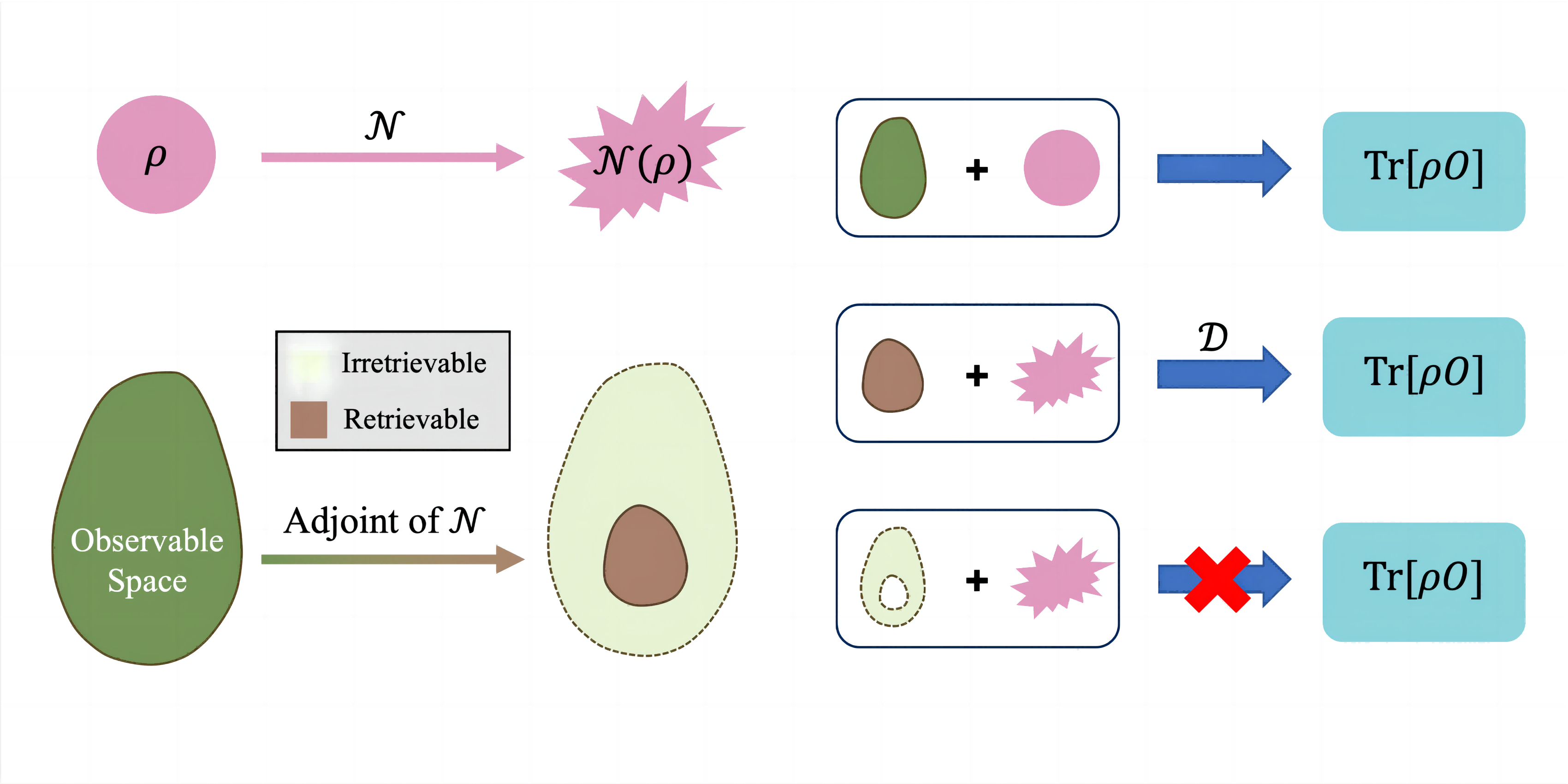
Featured image: Illustration of the main result on the information recoverability of noisy quantum states.
[embedded content]
Popular summary
In this work, we propose a systematic framework to answer this question from an operational perspective. Building a connection between the Schrödinger picture and the Heisenberg picture, we give a necessary and sufficient condition that fully characterizes the shadow information recoverability. Based on this condition, we define the first measure that quantifies a quantum channel’s destructivity to shadow information, which is related to the rank of the channel’s matrix representation.
Our results also provide an error mitigation scheme with optimal costs, allowing the efficient recovery of shadow information from a wide range of noises, ensuring algorithms such as variational quantum eigensolver run faithfully on noisy intermediate-scale quantum devices.
► BibTeX data
► References
[1] David J Griffiths and Darrell F Schroeter. Introduction to quantum mechanics. Cambridge University Press, 2018. ISBN 1108100341. 10.1017/9781316995433.
https://doi.org/10.1017/9781316995433
[2] Michael A Nielsen and Isaac L Chuang. Quantum computation and quantum information. Cambridge University Press, 2010. ISBN 9781107002173. 10.1017/CBO9780511976667.
https://doi.org/10.1017/CBO9780511976667
[3] Mark M Wilde. Quantum Information Theory. Cambridge University Press, Cambridge, 2017. ISBN 9781316809976. 10.1017/9781316809976. URL http://ebooks.cambridge.org/ref/id/CBO9781316809976.
https://doi.org/10.1017/9781316809976
http://ebooks.cambridge.org/ref/id/CBO9781316809976
[4] John Watrous. The Theory of Quantum Information. Cambridge University Press, 2018. ISBN 9781107180567. 10.1017/9781316848142.
https://doi.org/10.1017/9781316848142
[5] C H Bennett, I Devetak, A W Harrow, P W Shor, and A Winter. The Quantum Reverse Shannon Theorem and Resource Tradeoffs for Simulating Quantum Channels. IEEE Transactions on Information Theory, 60 (5): 2926–2959, 2014. 10.1109/TIT.2014.2309968.
https://doi.org/10.1109/TIT.2014.2309968
[6] Xin Wang and Mark M. Wilde. Resource theory of asymmetric distinguishability for quantum channels. Physical Review Research, 1 (3): 033169, dec 2019. ISSN 2643-1564. 10.1103/PhysRevResearch.1.033169. URL https://doi.org/10.1103/PhysRevResearch.1.033169.
https://doi.org/10.1103/PhysRevResearch.1.033169
[7] Graeme Smith and Jon Yard. Quantum communication with zero-capacity channels. Science, 321 (5897): 1812–1815, 2008. 10.1126/science.1162242.
https://doi.org/10.1126/science.1162242
[8] Xin Wang, Mark M Wilde, and Yuan Su. Quantifying the magic of quantum channels. New Journal of Physics, 21 (10): 103002, oct 2019. ISSN 1367-2630. 10.1088/1367-2630/ab451d. URL https://iopscience.iop.org/article/10.1088/1367-2630/ab451d.
https://doi.org/10.1088/1367-2630/ab451d
[9] M. Cerezo, Andrew Arrasmith, Ryan Babbush, Simon C. Benjamin, Suguru Endo, Keisuke Fujii, Jarrod R. McClean, Kosuke Mitarai, Xiao Yuan, Lukasz Cincio, and Patrick J. Coles. Variational quantum algorithms. Nature Reviews Physics, aug 2021. ISSN 2522-5820. 10.1038/s42254-021-00348-9. URL https://www.nature.com/articles/s42254-021-00348-9.
https://doi.org/10.1038/s42254-021-00348-9
https://www.nature.com/articles/s42254-021-00348-9
[10] Alberto Peruzzo, Jarrod McClean, Peter Shadbolt, Man-Hong Yung, Xiao-Qi Zhou, Peter J. Love, Alán Aspuru-Guzik, and Jeremy L. O’Brien. A variational eigenvalue solver on a photonic quantum processor. Nature Communications, 5 (1): 4213, dec 2014. ISSN 2041-1723. 10.1038/ncomms5213. URL http://www.nature.com/articles/ncomms5213.
https://doi.org/10.1038/ncomms5213
http://www.nature.com/articles/ncomms5213
[11] Scott Aaronson. Shadow tomography of quantum states. SIAM Journal on Computing, 49 (5): STOC18–368, 2019. 10.1145/3188745.3188802.
https://doi.org/10.1145/3188745.3188802
[12] Scott Aaronson and Guy N Rothblum. Gentle measurement of quantum states and differential privacy. In Proceedings of the 51st Annual ACM SIGACT Symposium on Theory of Computing, pages 322–333, 2019. 10.1145/3313276.3316378.
https://doi.org/10.1145/3313276.3316378
[13] Hsin-Yuan Huang, Richard Kueng, and John Preskill. Predicting many properties of a quantum system from very few measurements. Nature Physics, 16 (10): 1050–1057, 2020. 10.1038/s41567-020-0932-7.
https://doi.org/10.1038/s41567-020-0932-7
[14] Howard Barnum, Emanuel Knill, and M.A. Nielsen. On quantum fidelities and channel capacities. IEEE Transactions on Information Theory, 46 (4): 1317–1329, jul 2000. ISSN 00189448. 10.1109/18.850671. URL http://ieeexplore.ieee.org/document/850671/.
https://doi.org/10.1109/18.850671
http://ieeexplore.ieee.org/document/850671/
[15] Charles H Bennett, David P DiVincenzo, and John A Smolin. Capacities of Quantum Erasure Channels. Physical Review Letters, 78 (16): 3217–3220, apr 1997. ISSN 0031-9007. 10.1103/PhysRevLett.78.3217. URL https://doi.org/10.1103/PhysRevLett.78.3217.
https://doi.org/10.1103/PhysRevLett.78.3217
[16] David P. DiVincenzo, Peter W. Shor, and John A. Smolin. Quantum-channel capacity of very noisy channels. Physical Review A, 57 (2): 830–839, feb 1998. ISSN 1050-2947. 10.1103/PhysRevA.57.830. URL https://doi.org/10.1103/PhysRevA.57.830.
https://doi.org/10.1103/PhysRevA.57.830
[17] Benjamin Schumacher. Sending entanglement through noisy quantum channels. Physical Review A, 54 (4): 2614, 1996. 10.1103/PhysRevA.54.2614.
https://doi.org/10.1103/PhysRevA.54.2614
[18] Alexander Semenovich Holevo. Bounds for the quantity of information transmitted by a quantum communication channel. Problemy Peredachi Informatsii, 9 (3): 3–11, 1973. URL http://mi.mathnet.ru/eng/ppi903.
http://mi.mathnet.ru/eng/ppi903
[19] Benjamin Schumacher and Michael D Westmoreland. Sending classical information via noisy quantum channels. Physical Review A, 56 (1): 131, 1997. 10.1103/PhysRevA.56.131.
https://doi.org/10.1103/PhysRevA.56.131
[20] Alexander S Holevo. The capacity of the quantum channel with general signal states. IEEE Transactions on Information Theory, 44 (1): 269–273, 1998. 10.1109/18.651037.
https://doi.org/10.1109/18.651037
[21] Francesco Buscemi, Michele Dall’Arno, Masanao Ozawa, and Vlatko Vedral. Direct observation of any two-point quantum correlation function. arXiv:1312.4240, dec 2013. URL http://arxiv.org/abs/1312.4240.
arXiv:1312.4240
[22] Kristan Temme, Sergey Bravyi, and Jay M. Gambetta. Error Mitigation for Short-Depth Quantum Circuits. Physical Review Letters, 119 (18): 180509, nov 2017. ISSN 0031-9007. 10.1103/PhysRevLett.119.180509. URL https://doi.org/10.1103/PhysRevLett.119.180509.
https://doi.org/10.1103/PhysRevLett.119.180509
[23] Suguru Endo, Simon C. Benjamin, and Ying Li. Practical Quantum Error Mitigation for Near-Future Applications. Physical Review X, 8 (3): 031027, jul 2018. ISSN 2160-3308. 10.1103/PhysRevX.8.031027. URL https://doi.org/10.1103/PhysRevX.8.031027 https://doi.org/10.1103/PhysRevX.8.031027.
https://doi.org/10.1103/PhysRevX.8.031027
[24] Ryuji Takagi. Optimal resource cost for error mitigation. Physical Review Research, 3 (3): 033178, aug 2021. ISSN 2643-1564. 10.1103/PhysRevResearch.3.033178. URL http://arxiv.org/abs/2006.12509 https://doi.org/10.1103/PhysRevResearch.3.033178.
https://doi.org/10.1103/PhysRevResearch.3.033178
arXiv:2006.12509
[25] Jiaqing Jiang, Kun Wang, and Xin Wang. Physical Implementability of Linear Maps and Its Application in Error Mitigation. Quantum, 5: 600, December 2021. ISSN 2521-327X. 10.22331/q-2021-12-07-600. URL https://doi.org/10.22331/q-2021-12-07-600.
https://doi.org/10.22331/q-2021-12-07-600
[26] Christophe Piveteau, David Sutter, and Stefan Woerner. Quasiprobability decompositions with reduced sampling overhead. 10.1038/s41534-022-00517-3.
https://doi.org/10.1038/s41534-022-00517-3
[27] Lieven Vandenberghe and Stephen Boyd. Semidefinite programming. SIAM review, 38 (1): 49–95, 1996.
[28] Sheldon Axler. Linear algebra done right, volume 2. Springer, 2015.
[29] Alan J Laub. Matrix Analysis for Scientists and Engineers, volume 91. SIAM, 2005.
[30] Wassily Hoeffding. Probability inequalities for sums of bounded random variables. In The Collected Works of Wassily Hoeffding, pages 409–426. Springer, 1994. 10.1007/978-1-4612-0865-5_26.
https://doi.org/10.1007/978-1-4612-0865-5_26
[31] Sergey Bravyi, Sarah Sheldon, Abhinav Kandala, David C. Mckay, and Jay M. Gambetta. Mitigating measurement errors in multi-qubit experiments. 10.1103/PhysRevA.103.042605, jun 2020.
https://doi.org/10.1103/PhysRevA.103.042605
[32] Filip B. Maciejewski, Zoltán Zimborás, and Michał Oszmaniec. Mitigation of readout noise in near-term quantum devices by classical post-processing based on detector tomography. Quantum, 4: 257, apr 2020. ISSN 2521-327X. 10.22331/q-2020-04-24-257. URL http://arxiv.org/abs/1907.08518 https://quantum-journal.org/papers/q-2020-04-24-257/.
https://doi.org/10.22331/q-2020-04-24-257
arXiv:1907.08518
[33] Piotr Czarnik, Andrew Arrasmith, Patrick J Coles, and Lukasz Cincio. Error mitigation with Clifford quantum-circuit data. 10.22331/q-2021-11-26-5929, may 2020.
https://doi.org/10.22331/q-2021-11-26-5929
[34] Jarrod R. McClean, Zhang Jiang, Nicholas C. Rubin, Ryan Babbush, and Hartmut Neven. Decoding quantum errors with subspace expansions. Nature Communications, 11 (1): 636, dec 2020. ISSN 2041-1723. 10.1038/s41467-020-14341-w. URL http://arxiv.org/abs/1903.05786 http://www.nature.com/articles/s41467-020-14341-w.
https://doi.org/10.1038/s41467-020-14341-w
arXiv:1903.05786
[35] Zhenyu Cai. Multi-exponential error extrapolation and combining error mitigation techniques for NISQ applications. npj Quantum Information, 7 (1), 2021a. ISSN 20566387. 10.1038/s41534-021-00404-3. URL http://dx.doi.org/10.1038/s41534-021-00404-3.
https://doi.org/10.1038/s41534-021-00404-3
[36] Daniel Bultrini, Max Hunter Gordon, Piotr Czarnik, Andrew Arrasmith, Patrick J. Coles, and Lukasz Cincio. Unifying and benchmarking state-of-the-art quantum error mitigation techniques. arXiv preprint arXiv:2107.13470, pages 1–13, 2021. URL http://arxiv.org/abs/2107.13470.
arXiv:2107.13470
[37] Zhenyu Cai. A Practical Framework for Quantum Error Mitigation. arXiv preprint arXiv:2110.05389, pages 1–15, oct 2021b. URL http://arxiv.org/abs/2110.05389.
arXiv:2110.05389
[38] Piotr Czarnik, Andrew Arrasmith, Lukasz Cincio, and Patrick J. Coles. Qubit-efficient exponential suppression of errors. arXiv preprint arXiv:2102.06056, 2021. URL http://arxiv.org/abs/2102.06056.
arXiv:2102.06056
[39] Matteo Lostaglio and Alessandro Ciani. Error Mitigation and Quantum-Assisted Simulation in the Error Corrected Regime. Physical Review Letters, 127 (20): 200506, nov 2021. ISSN 0031-9007. 10.1103/PhysRevLett.127.200506. URL http://arxiv.org/abs/2103.07526 https://doi.org/10.1103/PhysRevLett.127.200506.
https://doi.org/10.1103/PhysRevLett.127.200506
arXiv:2103.07526
[40] Ryuji Takagi, Suguru Endo, Shintaro Minagawa, and Mile Gu. Fundamental limits of quantum error mitigation. 10.1038/s41534-022-00618-z, pages 1–20, sep 2021.
https://doi.org/10.1038/s41534-022-00618-z
[41] Bálint Koczor. Exponential Error Suppression for Near-Term Quantum Devices. Physical Review X, 11 (3): 031057, sep 2021. ISSN 2160-3308. 10.1103/PhysRevX.11.031057. URL http://arxiv.org/abs/2011.05942 http://dx.doi.org/10.1103/PhysRevX.11.031057 https://doi.org/10.1103/PhysRevX.11.031057.
https://doi.org/10.1103/PhysRevX.11.031057
arXiv:2011.05942
[42] Suguru Endo, Zhenyu Cai, Simon C Benjamin, and Xiao Yuan. Hybrid Quantum-Classical Algorithms and Quantum Error Mitigation. Journal of the Physical Society of Japan, 90 (3): 032001, mar 2021. ISSN 0031-9015. 10.7566/JPSJ.90.032001. URL http://arxiv.org/abs/2011.01382 https://journals.jps.jp/doi/10.7566/JPSJ.90.032001.
https://doi.org/10.7566/JPSJ.90.032001
arXiv:2011.01382
[43] Kun Wang, Yu-Ao Chen, and Xin Wang. Mitigating Quantum Errors via Truncated Neumann Series. arXiv:2111.00691, nov 2021. URL http://arxiv.org/abs/2111.00691.
arXiv:2111.00691
[44] Yasunari Suzuki, Suguru Endo, Keisuke Fujii, and Yuuki Tokunaga. Quantum error mitigation for fault-tolerant quantum computing. 10.1103/PRXQuantum.3.010345, pages 1–33, 2020.
https://doi.org/10.1103/PRXQuantum.3.010345
[45] Luca Chirolli and Guido Burkard. Decoherence in solid-state qubits. Advances in Physics, 57 (3): 225–285, may 2008. ISSN 0001-8732. 10.1080/00018730802218067. URL http://www.tandfonline.com/doi/abs/10.1080/00018730802218067.
https://doi.org/10.1080/00018730802218067
[46] Daniel Gottesman. Quantum Error Correction and Fault-Tolerance. arXiv:quant-ph/0507174, jul 2005. URL http://arxiv.org/abs/quant-ph/0507174.
arXiv:quant-ph/0507174
[47] Daniel A Lidar and Todd A Brun. Quantum error correction. Cambridge University Press, 2013. ISBN 0521897874.
[48] Barbara M. Terhal. Quantum error correction for quantum memories. Reviews of Modern Physics, 87 (2): 307–346, apr 2015. ISSN 0034-6861. 10.1103/RevModPhys.87.307. URL http://doi.org/10.1103/RevModPhys.87.307.
https://doi.org/10.1103/RevModPhys.87.307
[49] John Preskill. Quantum Computing in the NISQ era and beyond. Quantum, 2: 79, aug 2018. ISSN 2521-327X. 10.22331/q-2018-08-06-79. URL https://quantum-journal.org/papers/q-2018-08-06-79/.
https://doi.org/10.22331/q-2018-08-06-79
https://quantum-journal.org/papers/q-2018-08-06-79/
[50] Sumeet Khatri and Mark M Wilde. Principles of quantum communication theory: A modern approach. arXiv preprint arXiv:2011.04672, 2020.
arXiv:2011.04672
Cited by
This Paper is published in Quantum under the Creative Commons Attribution 4.0 International (CC BY 4.0) license. Copyright remains with the original copyright holders such as the authors or their institutions.
- SEO Powered Content & PR Distribution. Get Amplified Today.
- Platoblockchain. Web3 Metaverse Intelligence. Knowledge Amplified. Access Here.
- Source: https://quantum-journal.org/papers/q-2023-04-13-978/
- :is
- ][p
- 1
- 10
- 11
- 1994
- 1996
- 1998
- 2011
- 2014
- 2017
- 2018
- 2019
- 2020
- 2021
- 28
- 39
- 7
- 8
- 9
- a
- ABSTRACT
- access
- ACM
- adequately
- advances
- affect
- affiliations
- Alan
- Alexander
- algorithms
- Allowing
- allows
- analysis
- and
- Andrew
- annual
- answer
- Application
- applications
- approach
- ARE
- AS
- Aug
- author
- authors
- Baidu
- based
- BE
- Beijing
- Benjamin
- between
- Beyond
- Break
- Building
- by
- cambridge
- CAN
- capacities
- Capacity
- Channel
- channels
- characterize
- characterizes
- Charles
- chen
- combining
- comment
- Commons
- Communication
- Communications
- computation
- computer
- computer science
- computing
- condition
- connection
- content
- copyright
- corrected
- Correlation
- Corresponding
- corrupted
- Cost
- Costs
- could
- crucial
- Daniel
- data
- David
- December
- december 2021
- Decoding
- Den
- Department
- Devices
- direct
- discuss
- dynamics
- e
- efficient
- efficiently
- embedded
- energy
- Engineers
- ensuring
- Era
- error
- Errors
- essential
- establish
- Ether (ETH)
- expectation
- exponential
- Feb
- few
- First
- For
- Framework
- from
- full
- fully
- function
- fundamental
- General
- gentle
- Give
- given
- gives
- Ground
- Guy
- holders
- Hong
- Hong Kong
- How
- However
- http
- HTTPS
- Hybrid
- hybrid quantum-classical
- i
- IEEE
- image
- in
- inequalities
- inevitably
- information
- Initiative
- institutions
- interesting
- International
- introduce
- Introduction
- ITS
- Japan
- JavaScript
- John
- journal
- Kong
- Leave
- License
- lidar
- LIMIT
- limits
- love
- magic
- Main
- many
- Maps
- mark
- Matrix
- max
- max-width
- May..
- measure
- measurements
- mechanics
- Memories
- Michael
- minimum
- Mitigate
- mitigating
- mitigation
- Modern
- Month
- Moreover
- most
- Natural
- Nature
- necessary
- New
- Noise
- Oct
- of
- on
- ONE
- open
- operational
- optimal
- original
- Paper
- perspective
- Peter
- physical
- Physics
- picture
- plato
- Plato Data Intelligence
- PlatoData
- Practical
- practically
- predicting
- press
- principles
- privacy
- probability
- Proceedings
- Processor
- Programming
- properties
- propose
- protocol
- protocols
- provide
- published
- publisher
- quantity
- Quantum
- quantum algorithms
- quantum computing
- quantum error correction
- quantum information
- Quantum Mechanics
- quantum systems
- qubits
- question
- random
- range
- recovering
- recovery
- Reduced
- references
- regime
- related
- relevant
- remains
- representation
- research
- resource
- result
- Results
- revealing
- reverse
- review
- Reviews
- Richard
- road
- Run
- Ryan
- s
- scheme
- Science
- scientists
- scott aaronson
- sending
- Series
- Shadow
- siam
- Signal
- significant
- Simon
- simulation
- Society
- some
- State
- state-of-the-art
- States
- Step
- Stephen
- Steps
- Study
- such
- sufficient
- sums
- suppression
- Symposium
- system
- Systems
- techniques
- that
- The
- the information
- their
- Through
- Title
- to
- Transactions
- ultimate
- under
- understood
- university
- URL
- Values
- variables
- via
- volume
- W
- WELL
- which
- wide
- Wide range
- Winter
- with
- Work
- works
- X
- year
- yielding
- YING
- youtube
- Yuan
- zephyrnet
- Zhao

